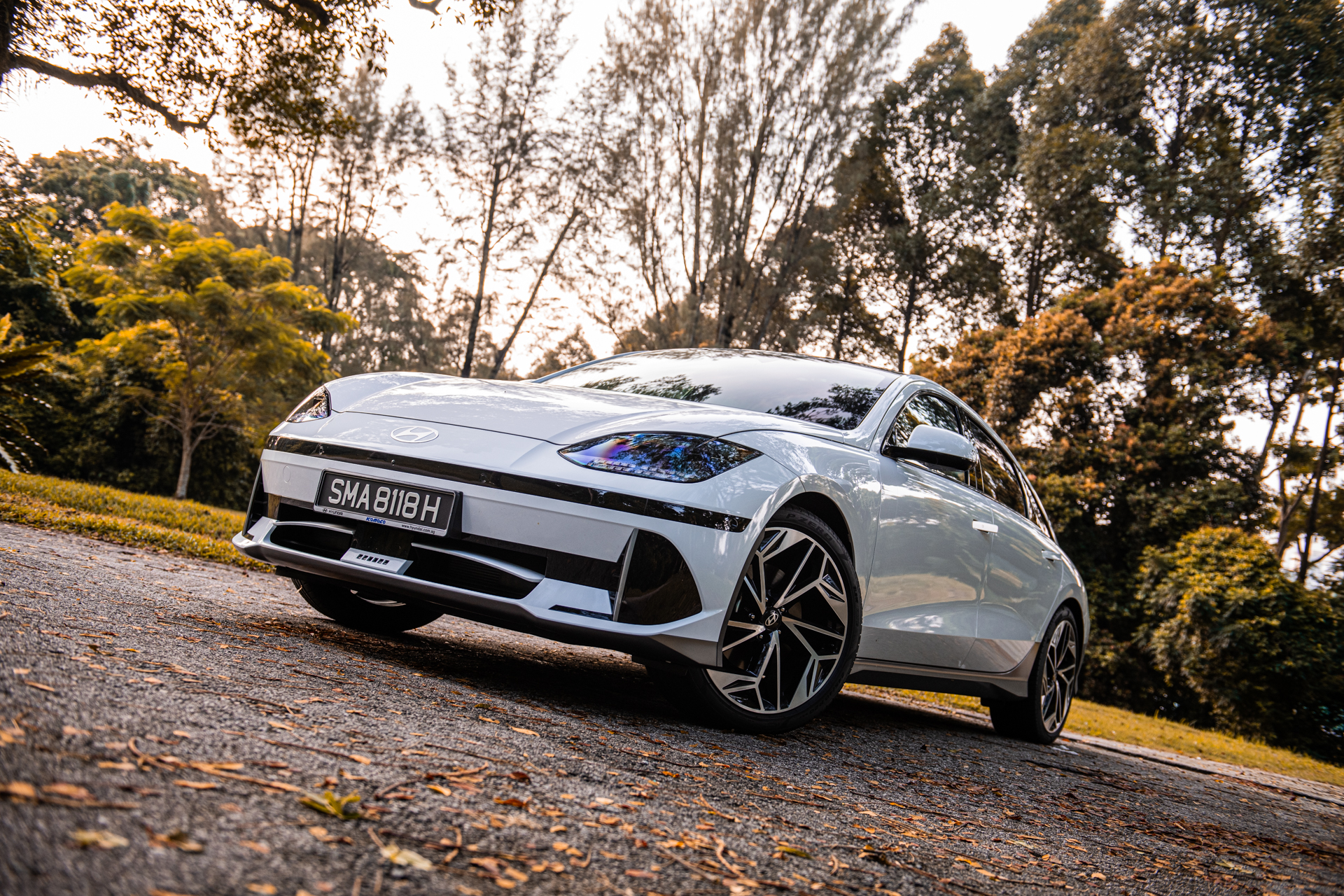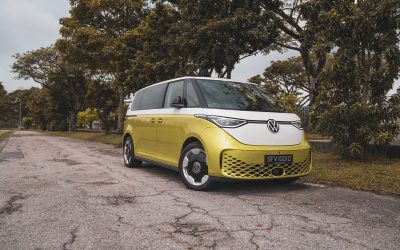The new Hyundai Ioniq 6 takes all of the good points from the Ioniq 5, resulting in an even more impressive offering.
(Article updated 25 October 2023)
Hyundai’s Ioniq 5 is one of the defining cars of the past few years – a vehicle with a polarising bold design and tech to boot, marking the Korean automaker’s emergence as a real dominant superpower, particularly in the electric vehicle segment. Now the company is aiming to build on that success with the Ioniq 6, a swoopy new saloon that’s hot off the press in Singapore.
The nomenclature might lead you to expect the 6 to be positioned a notch above the 5, but that isn’t quite the case. There is a premium, but it’s a modest one, and both cars fit different roles on the EV spectrum.
But, just how good of an EV is the Ioniq 6?
A Bold Entrance
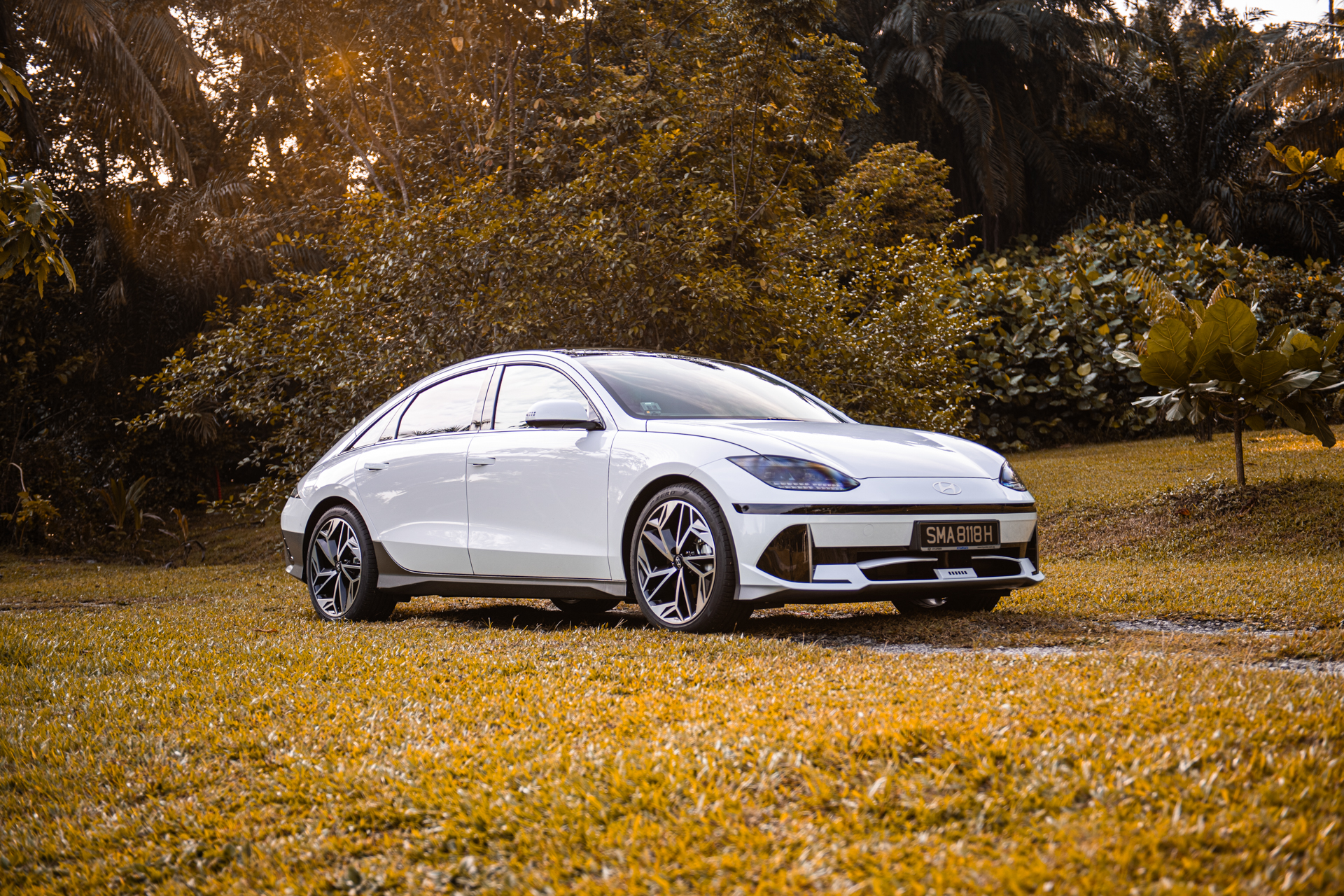
Hyundai’s banking on the Ioniq 6’s eye-catching looks to make it stand out, and let me tell you, it’s a grand entrance indeed. Kudos to the design squad; they’ve taken a bold step here. They could’ve just scaled down the Giugiaro-inspired Ioniq 5, and folks would’ve nodded in approval.
But, Hyundai decided to take the high road, fashioning the Ioniq 6 with sleek curves inspired by vintage “streamliners” like the Art Deco Stout Scarab from the 1930s. A modern remaster of the throwback-to-the-80s era of design.
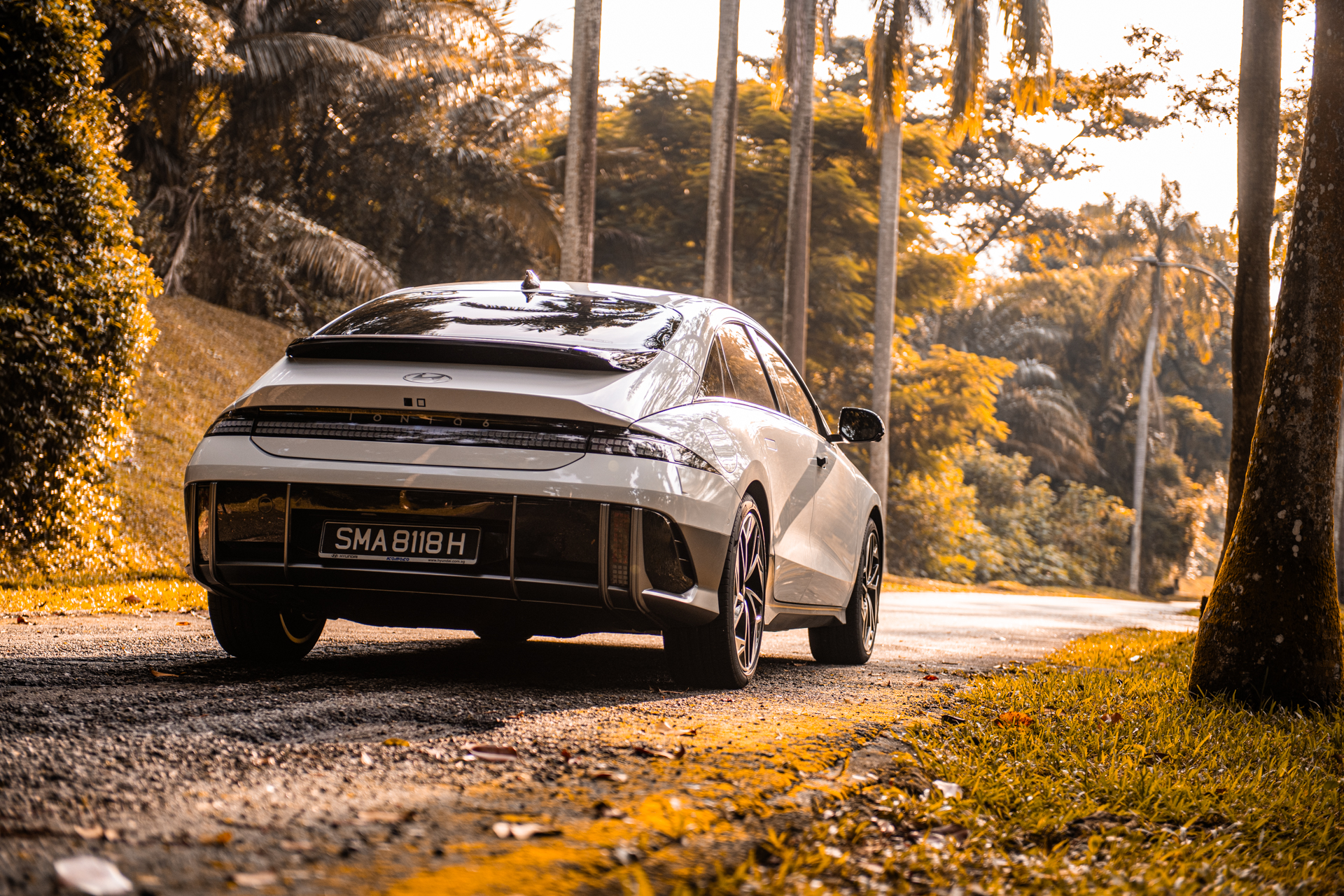
It’s not all looks either; this beauty boasts a drag coefficient of 0.22, designed to milk the most out of every mile. The front bumper flaunts active air flaps that play peekaboo with the wind, minimizing resistance and maximising cooling.
And that rear spoiler array really gives off Saab 900 charisma, don’t you think?
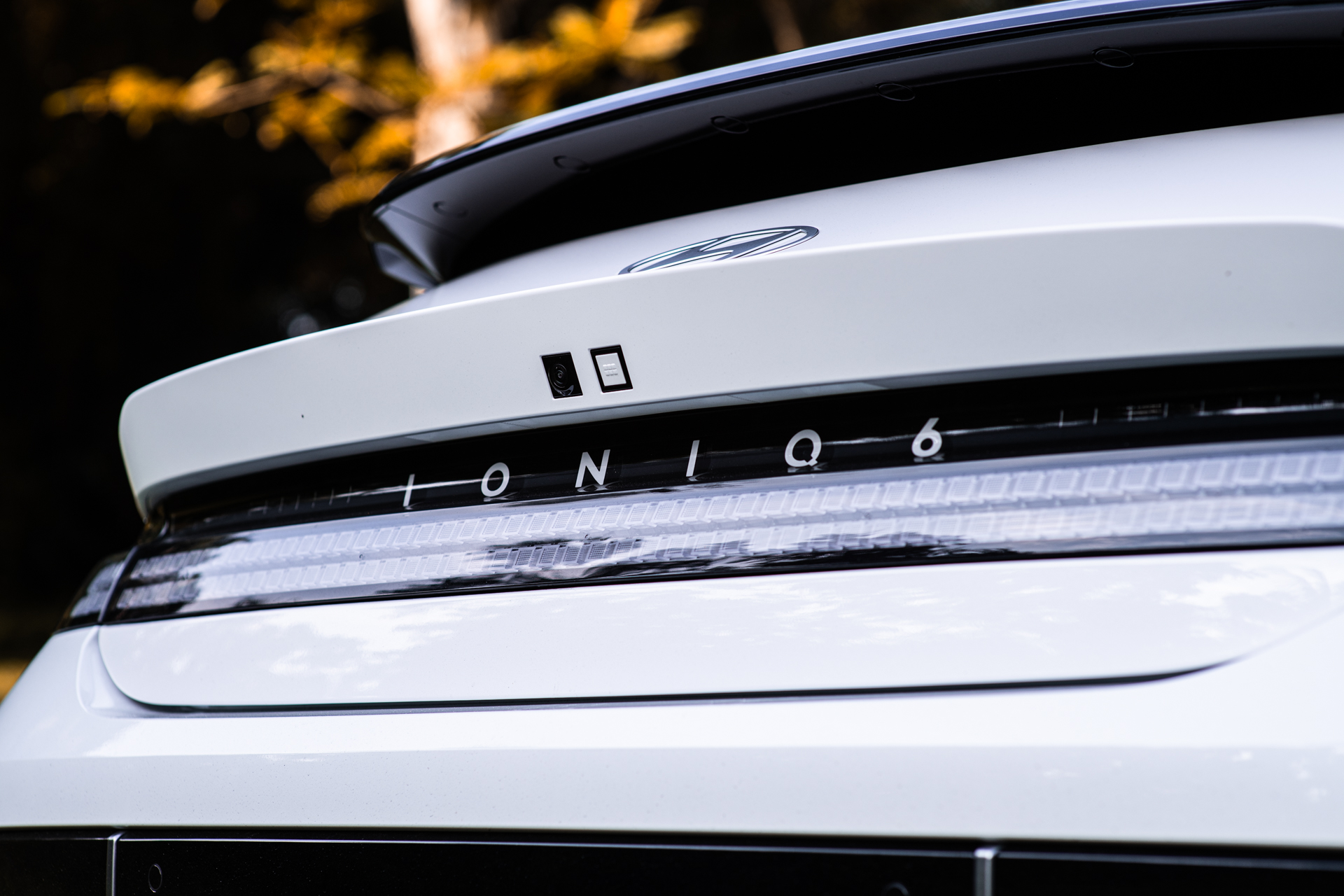

Now, this ride’s aesthetics might trigger a love-it-or-hate-it reaction. But hey, opinions are like rims – everyone’s got their favourite set. Me? I’m in the former camp, loving every curve and edge. The Ioniq 6 doesn’t just look avant-garde; it lives it.
Business-Class Cabin
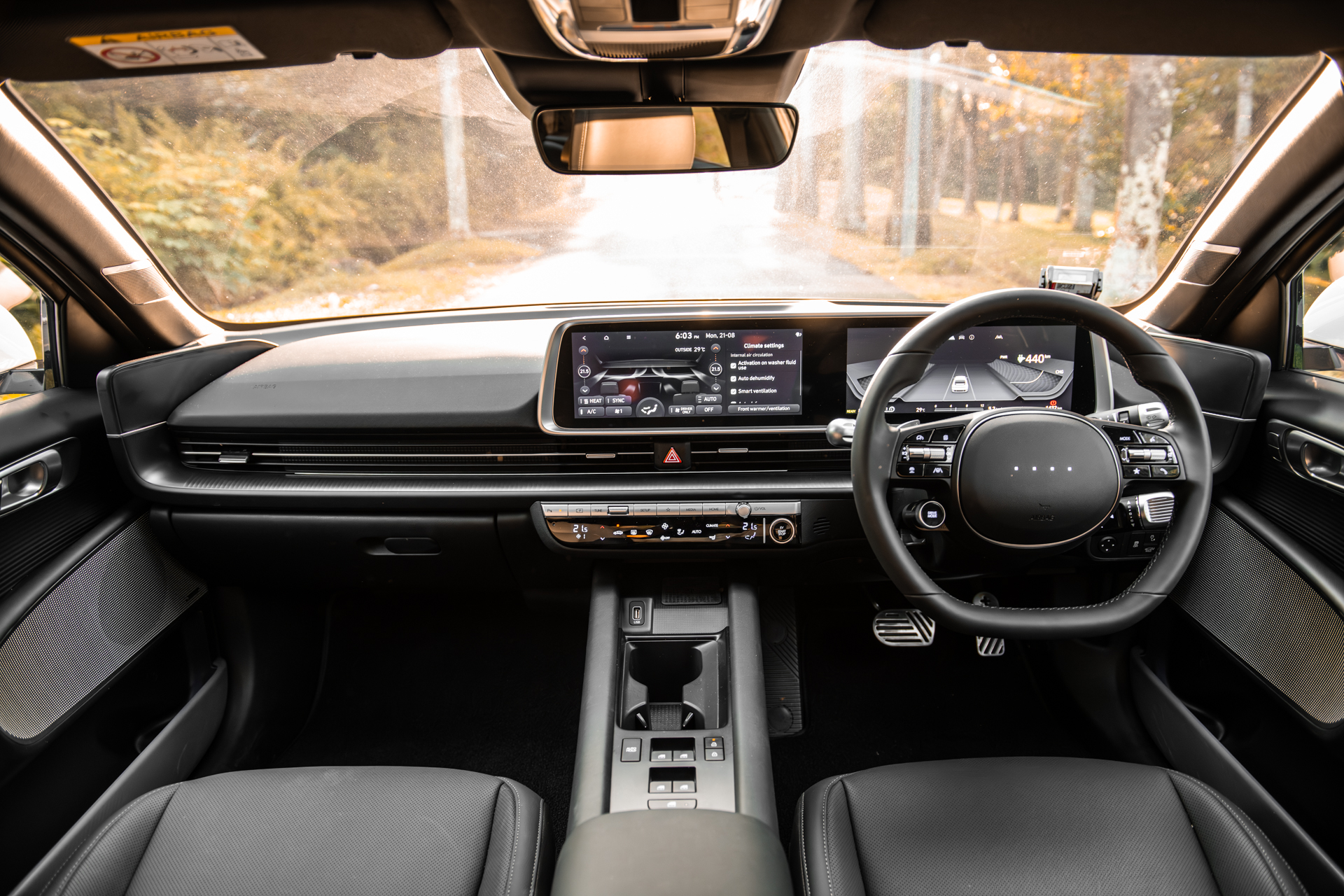
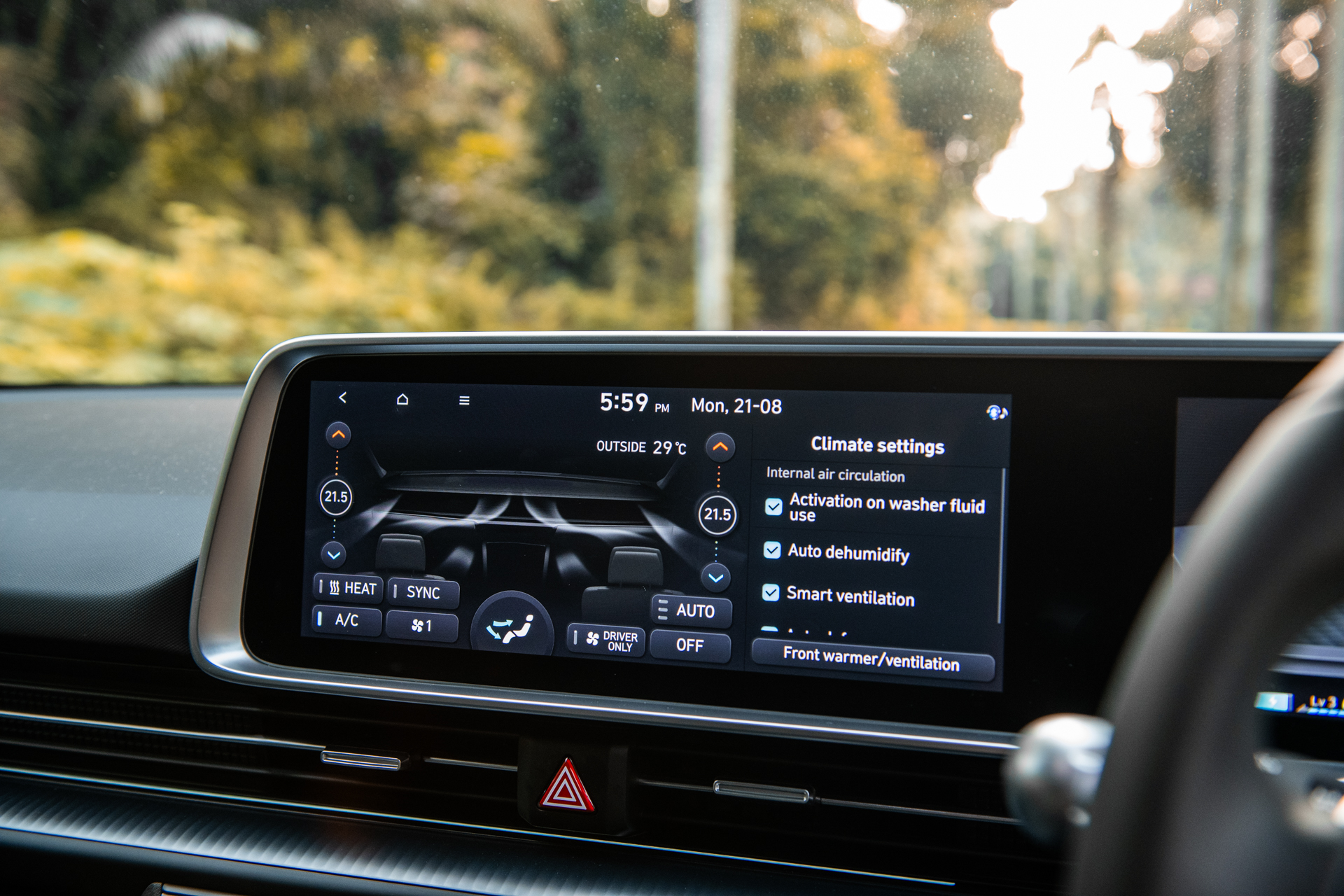
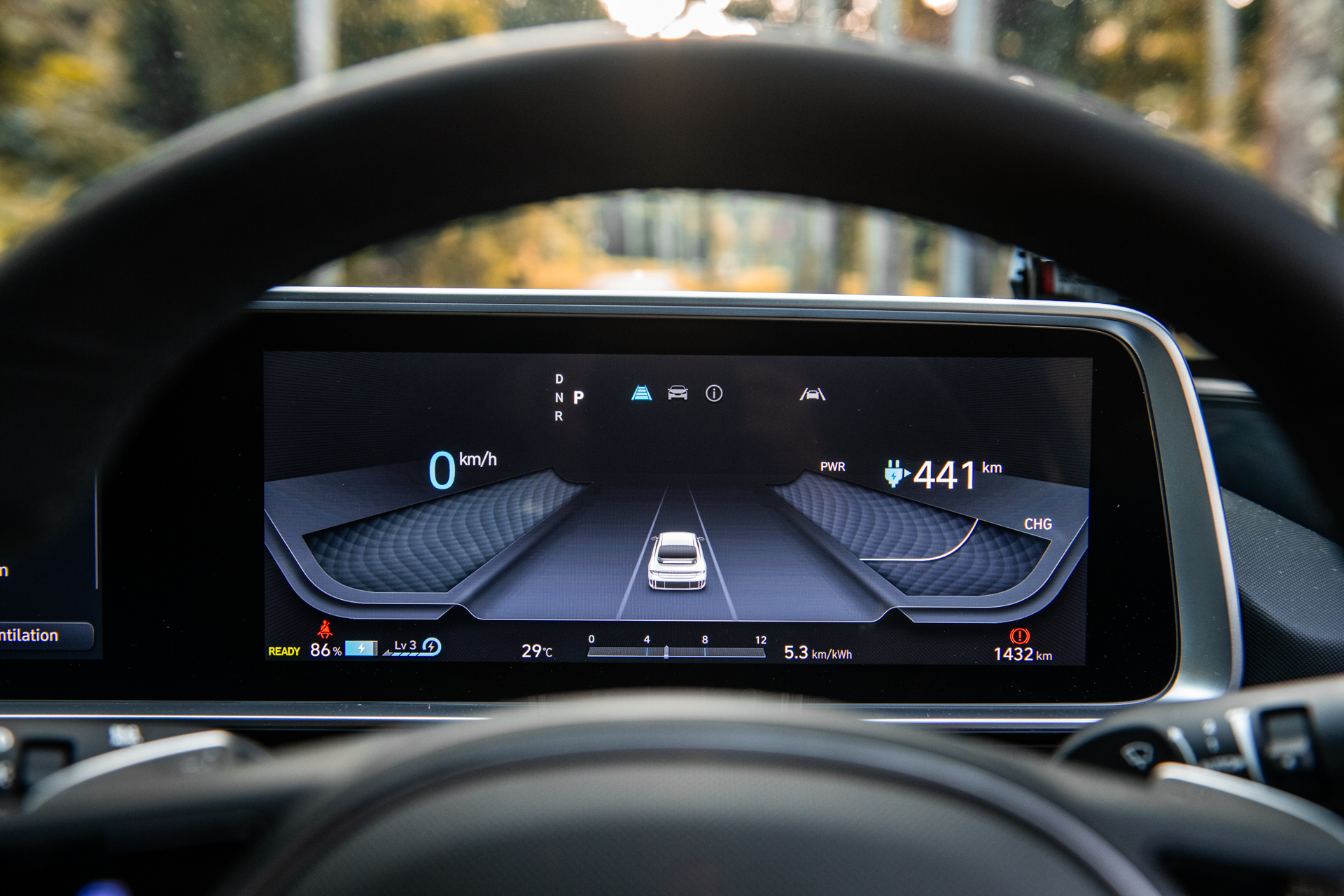


Step inside, and the Ioniq 6’s interior design is a modern affair. The cabin colour palette offers a monochrome choice of grey or black; go for the lighter shade, and you’ll be soaking in an aura of spaciousness. It’s like stepping into a lounge – comfortable seats (except for those quirky headrests) and a setup that oozes simplicity.
The dual infotainment screens sit amidst some intentional blank space, making the experience smooth and user-friendly. The drive select stalk might be playing hide-and-seek behind the wheel, but the rest is right where you’d expect them.

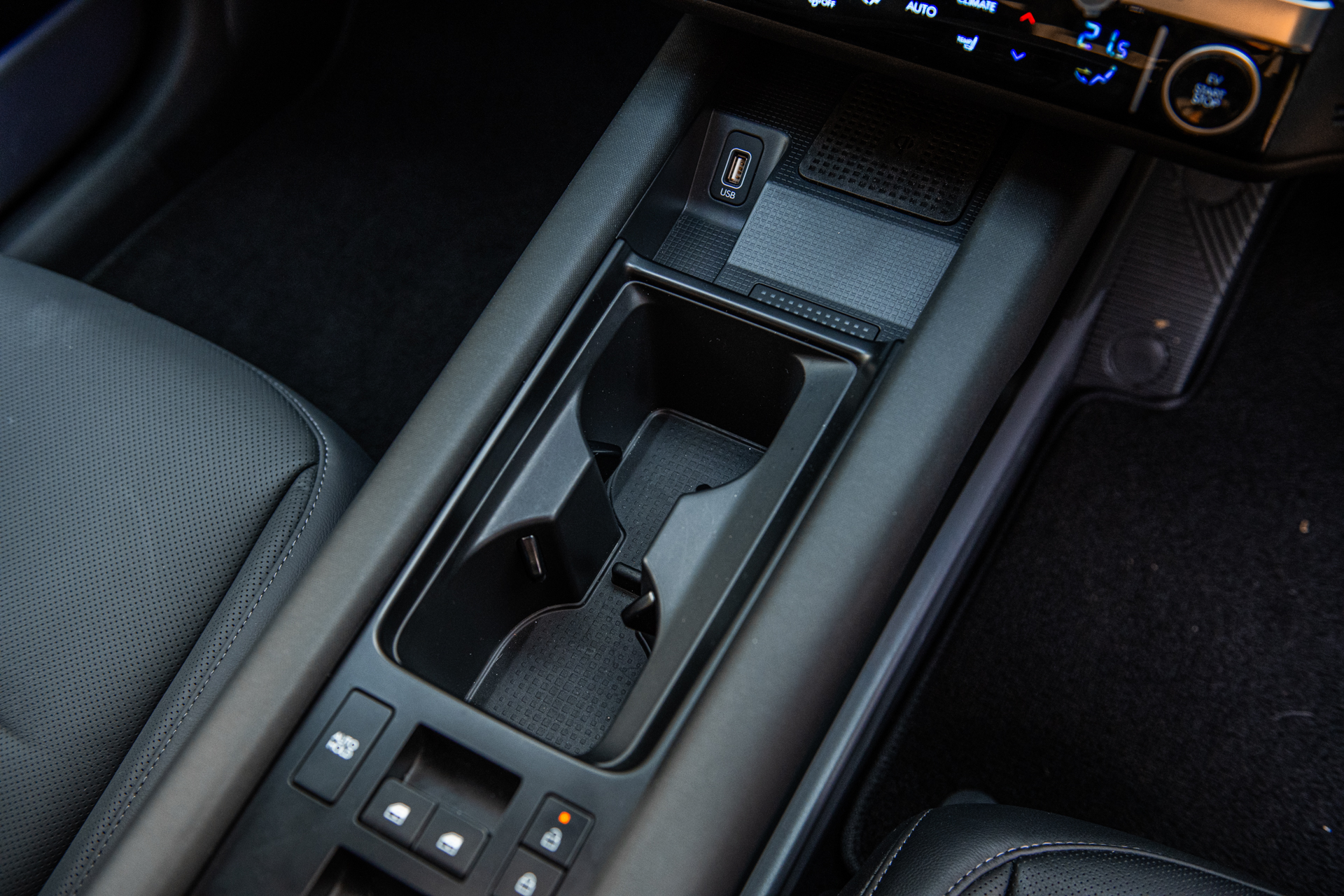


Climate controls have their own dedicated array; a huge relief for driving – no more finger gymnastics with menus like in the BMW i4. The infotainment system’s graphics are clean, menus are intuitive, and the driver’s display delivers all the info you need.
Wireless Apple CarPlay and Android Auto? Check. Wireless charging pad and USB port? Check. Nifty centre console with ample storage for your various bits and bobs? All good chief.
The glovebox? Well, it’s a drawer now – old-school charm with a dash of modern. But hold on, the door bins aren’t quite what you’d hope for. Yes, they’re transparent, but they’re slim, like fitting a water bottle in skinny jeans. But don’t stress; the extra storage space in the middle compensates.
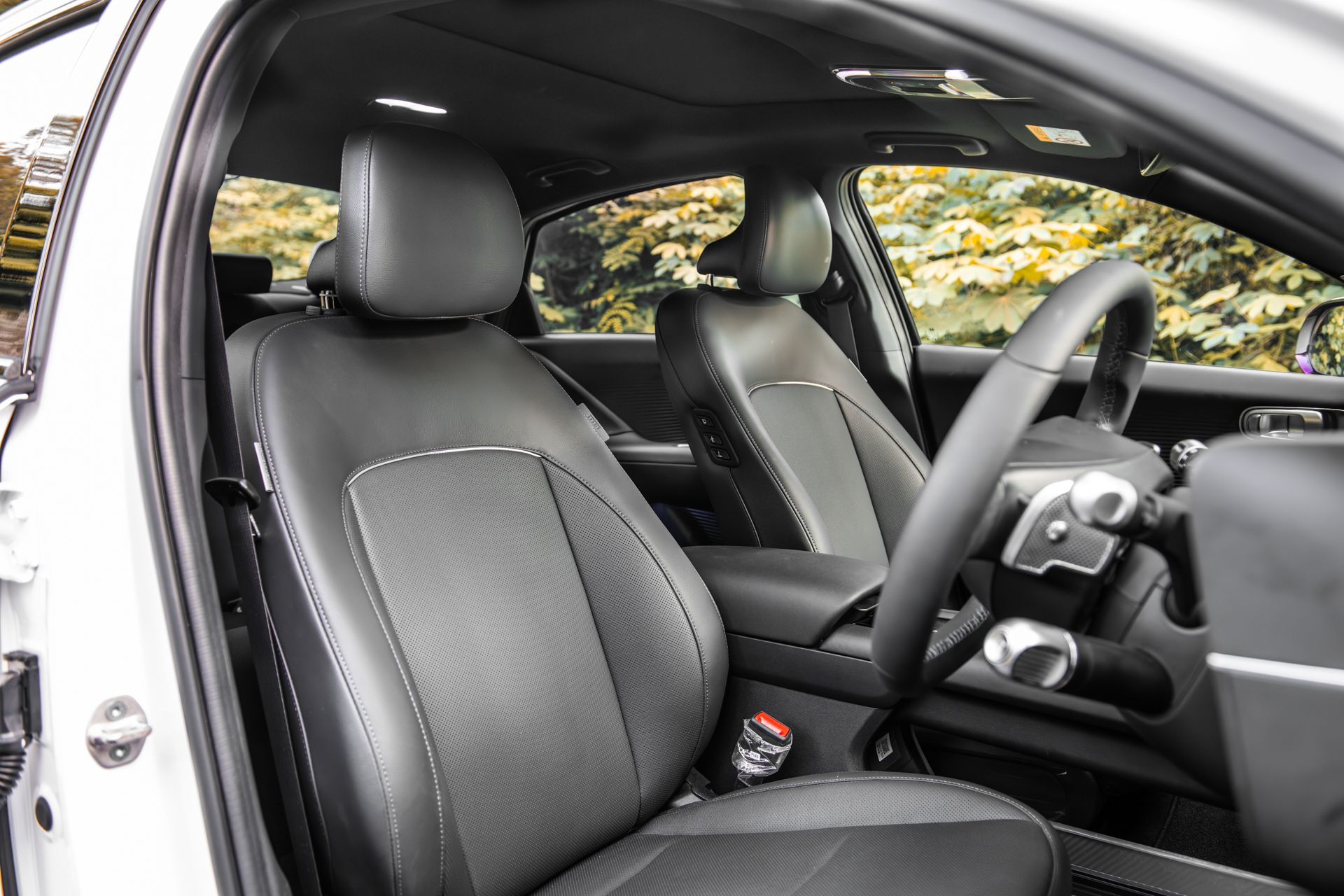

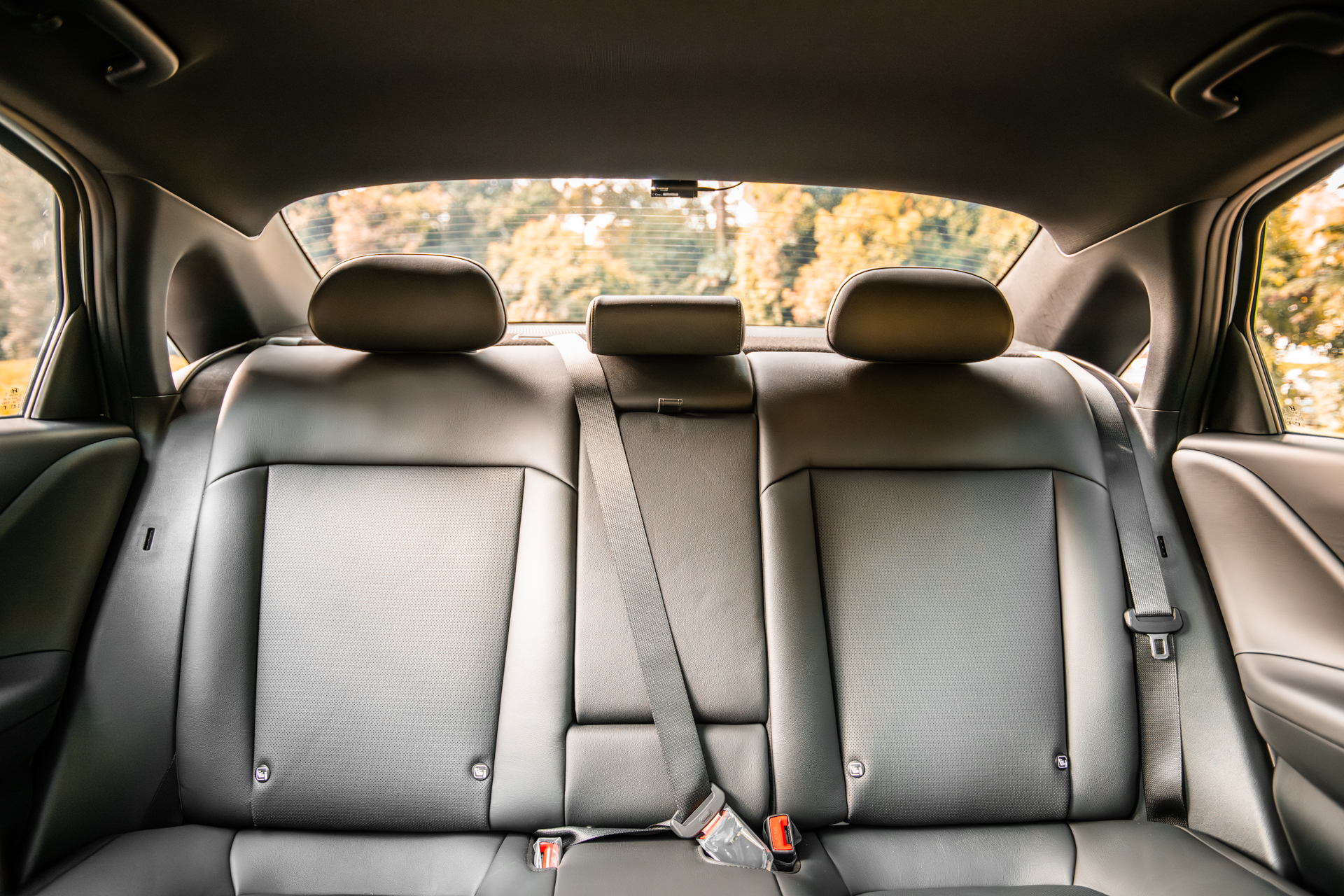
Now, let’s venture to the back. With no transmission hump, there’s a shocking amount of foot and knee room. Heck, you could sit on the floor if you’ve tried.
However, the sweeping roofline might play spoilsport for taller folks, but Hyundai’s played with the seat height to keep headroom issues at bay.

The only slight discrepancy is the boot. At 401 litres, it trails behind the Polestar 2, the Tesla Model 3, and the BMW i4. The opening aperture? Well, it’s not winning any awards either. But, you can fold the rear seats (60/40 split) for extra cargo room. The Ioniq 6 does boast a bonnet stash. Not the deepest, but still handy for charging cables.
Otherwise, it’s a pretty well-sorted package. The Ioniq 6 does well by not going too overboard, and it retains its practicality amid the incorporation of new-fangled tech.
Power-Packed Journeys
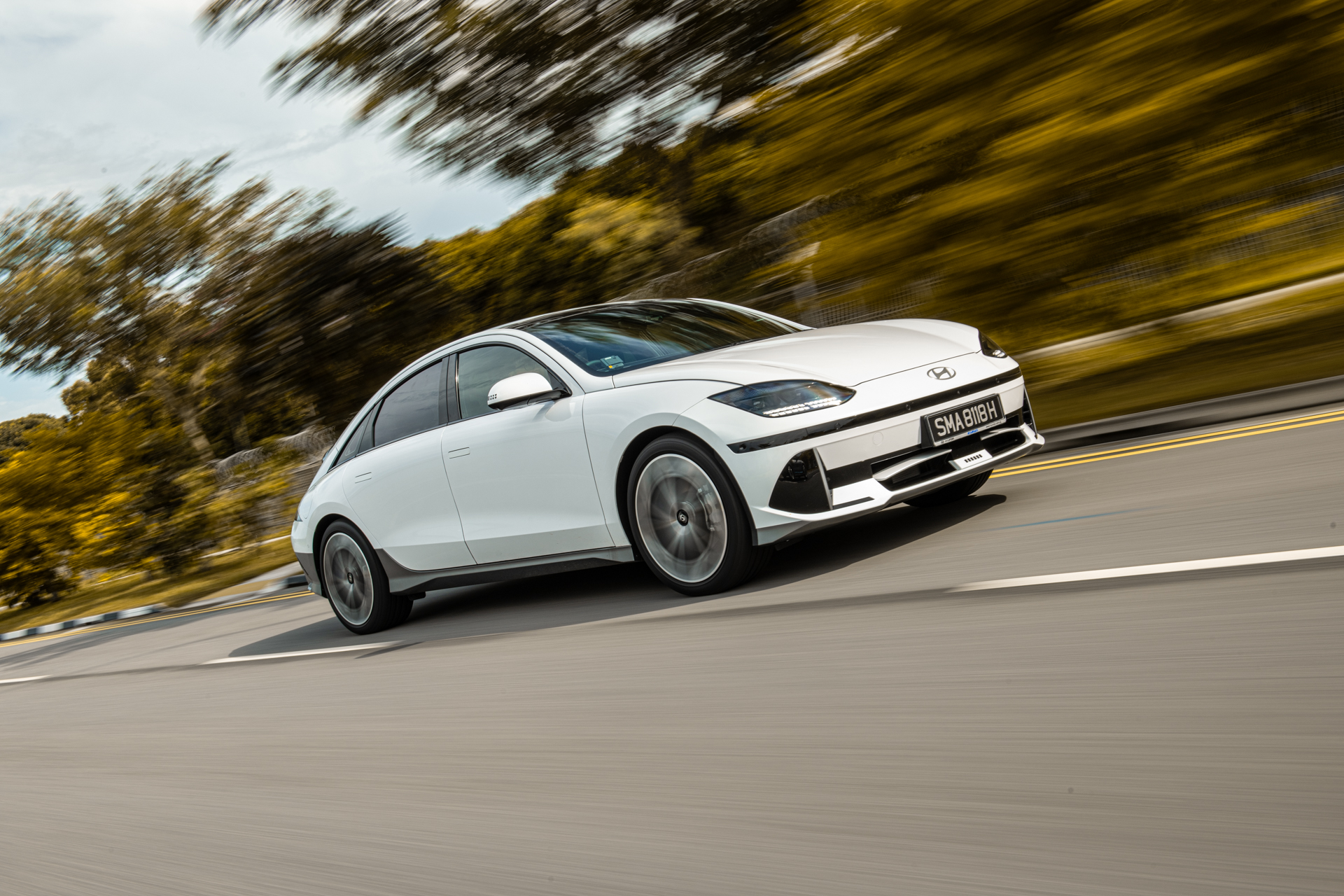
Unlike its 5 sibling, the Ioniq 6 keeps it simple with a 77.4kWh battery paired with dual motors, yielding all-wheel drive and a nifty 325hp with 605Nm of torque.
On the handling front, it’s not just a casual shift; it’s a leap. The 6 shares the E-GMP platform with the 5 but stretches over 20cm longer. Longer, with extended overhangs, yet it’s a whole 11cm shorter in height. And that translates to a lower centre of gravity, which provides tighter body control, and a sharper steering response. Cornering? It’s like writing your name with a flourish, confident strokes all the way.
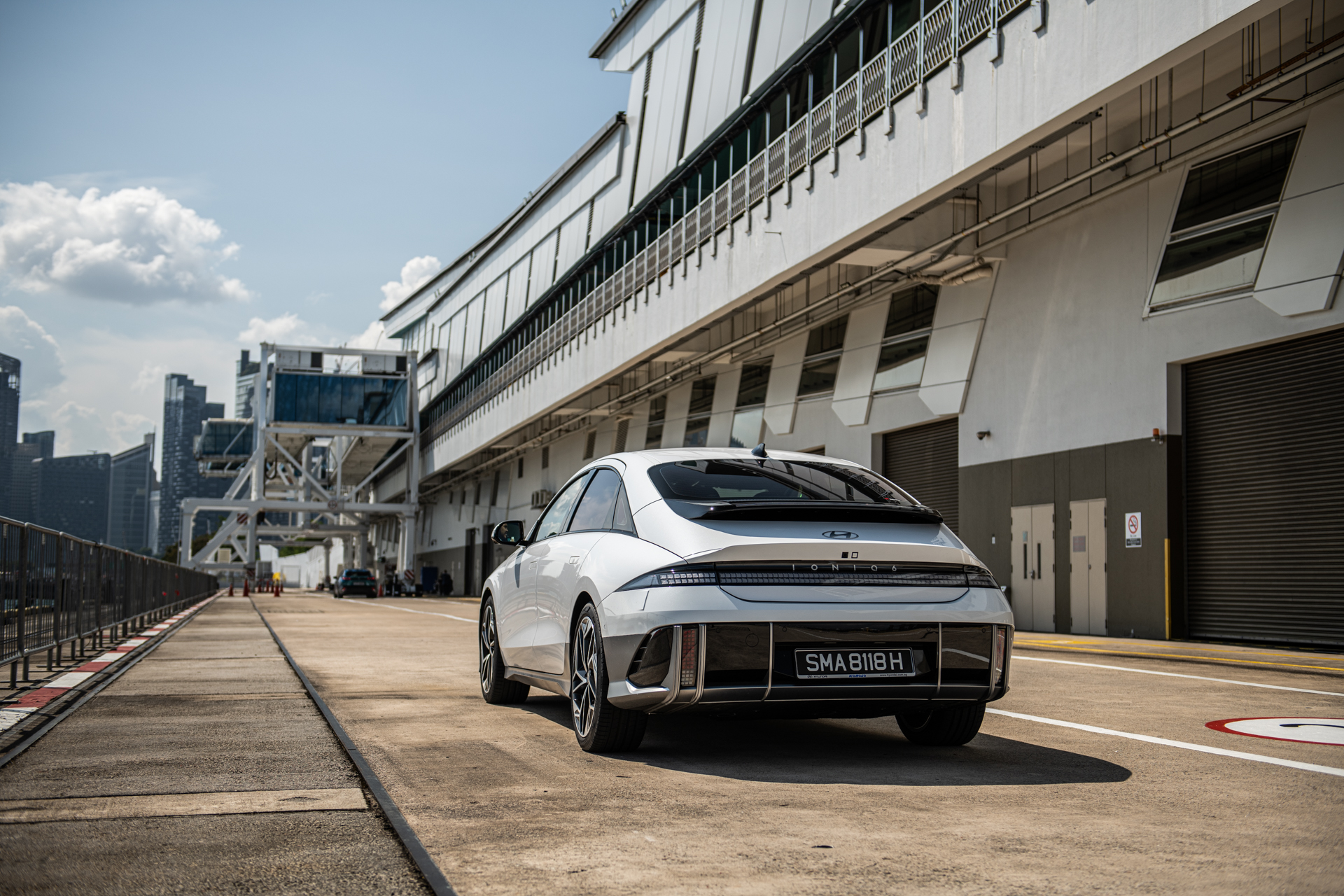
Around town, the Ioniq 6 is a smooth operator. Light steering coupled with the electric motors’ prompt power delivery means it’s punchy at junctions, and nimble in tight spots.
Of course, these good traits have to have trade-offs, and ride comfort is where the Ioniq 5 takes the cake. The 6 isn’t uncomfortable by any means, but it’s got a tad more firmness to its ride. Yet, it’s a fair deal; the 5 might be soft, but it can be floaty. The 6? It’s got a more confident grip on the road, but it doesn’t shy away from the occasional road bump dance.

Now, when you hit the highway, things change a bit. Cabin quietness is compromised a little by tire chatter on rough roads and a dash of wind hum around those wing mirrors. But hey, on those long stretches up North, the Ioniq 6 is your dependable pal. It’s comfortable, fairly hushed, and delivers you to your destination in relatively silent efficiency.

That streamlined facade means it can stretch its legs up to 519km, as claimed on paper. Like all EVs, it falls short of its target figures. But, it comes darn well close. My media stint totalled 400km, and there was still 20% left in its battery, so fair play to Hyundai. It’s not all gloom too; this ride’s no stranger to fast-charging stations. It can guzzle up to 232kW from a DC charger, taking that battery from 10% to 80% in a neat 20 minutes.
(update: 25 October 2023)
Our resident Saab-for-life enthusiast Vivek was chomping at the bits to get his grubby mitts on the steering wheel of the IONIQ 6. When he FINALLY stopped waxing lyrical about “the Korean Saab”, he went away to do his usual economy testing thingamajig.
With an overall average energy economy of 14.6kWh/100km or 6.9km/kWh across 486.7km, he bested Hyundai’s claimed 16.9kWh/100km or 5.9km/kWh WLTP average by quite a margin.
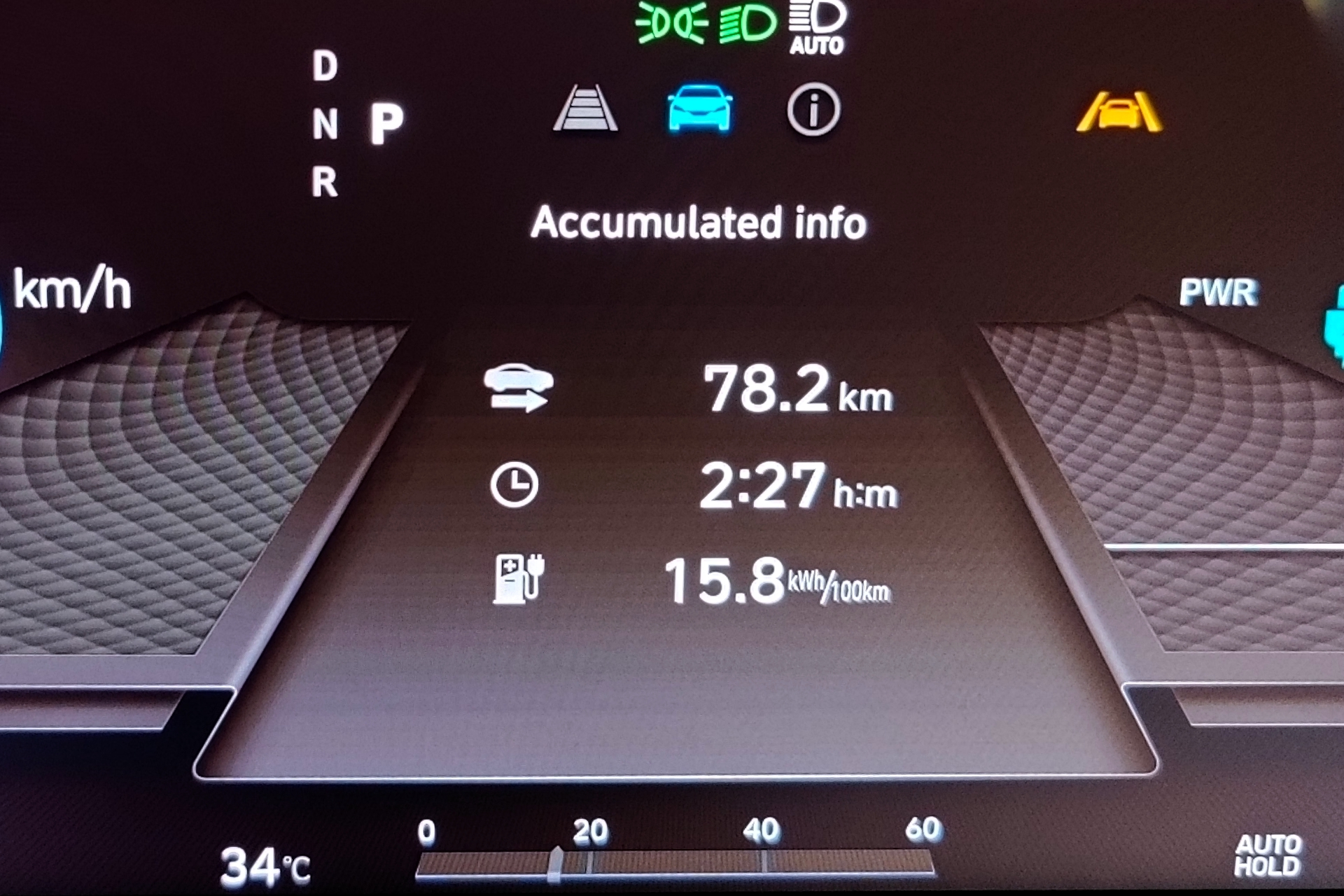
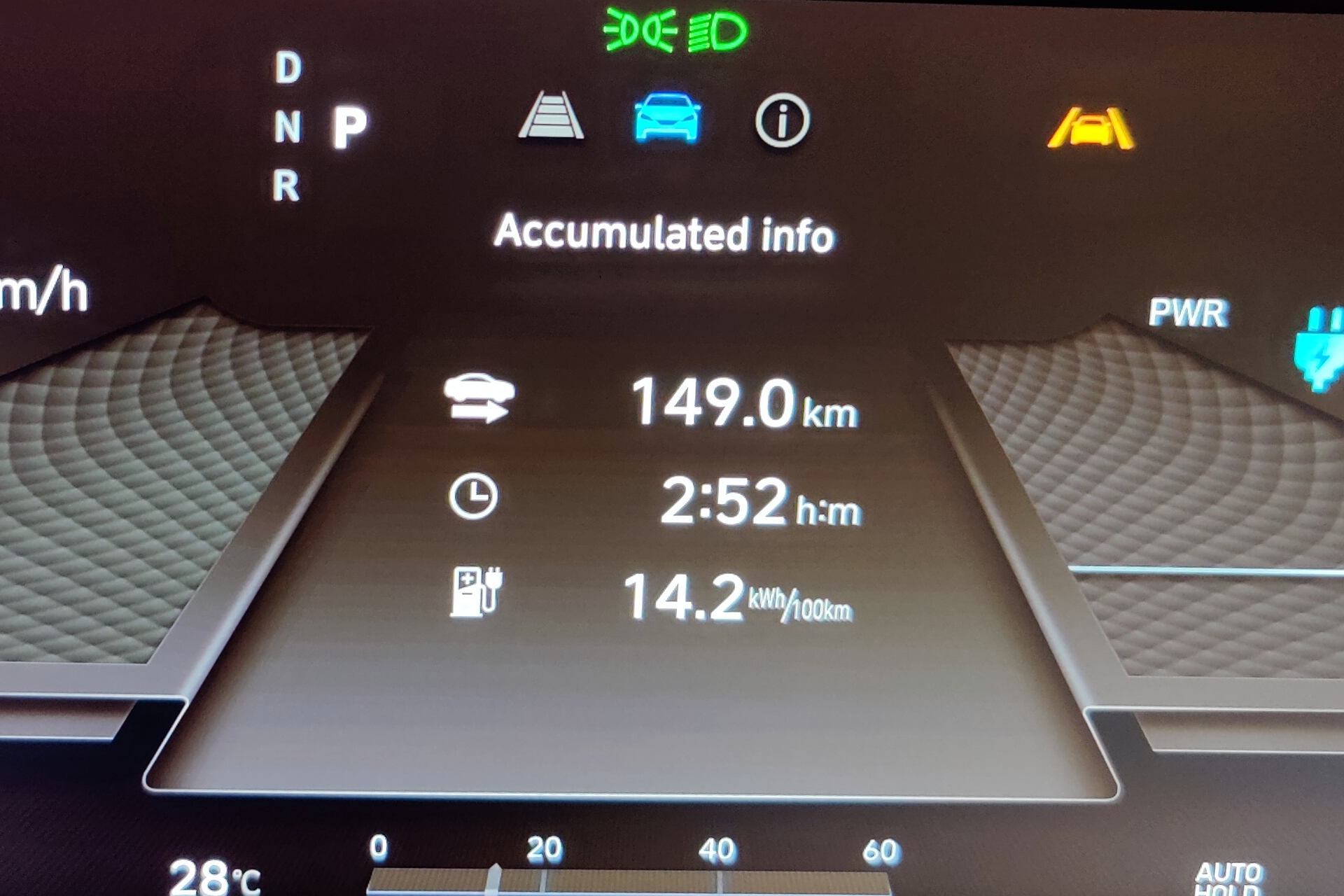
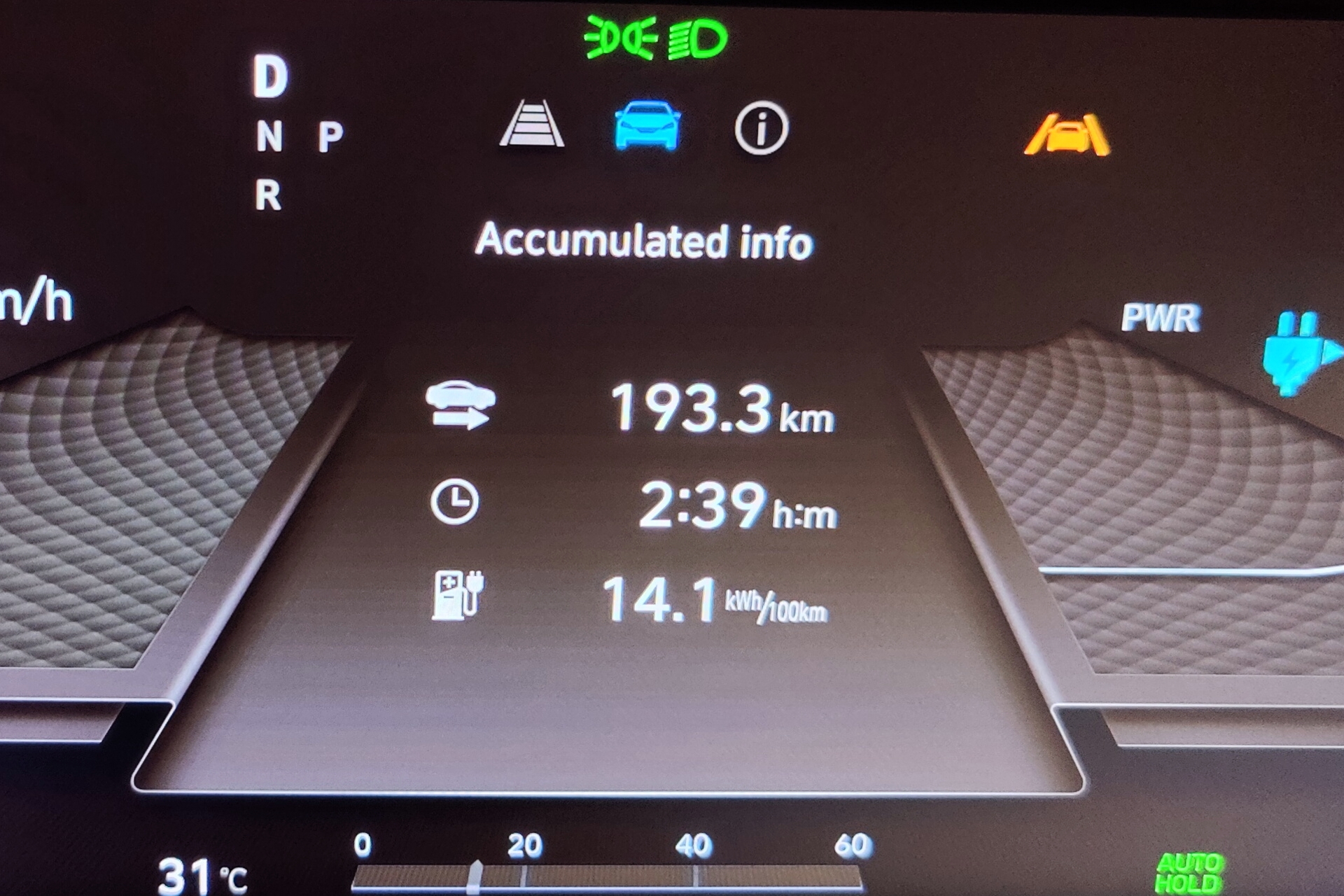
Driving smoothly is key, despite the IONIQ 6’s tempting 321hp and 605Nm which can be addicting when unleashed. Naturally, your mileage may vary based on use-case and driving conditions, but it just goes to show that good economy is there for the taking if one so chooses.
(/update)
In essence, this is a huge step up from the Ioniq 5 dynamic-wise, and the Ioniq 6 holds itself to a pretty high standard.
Big Improvements All Around
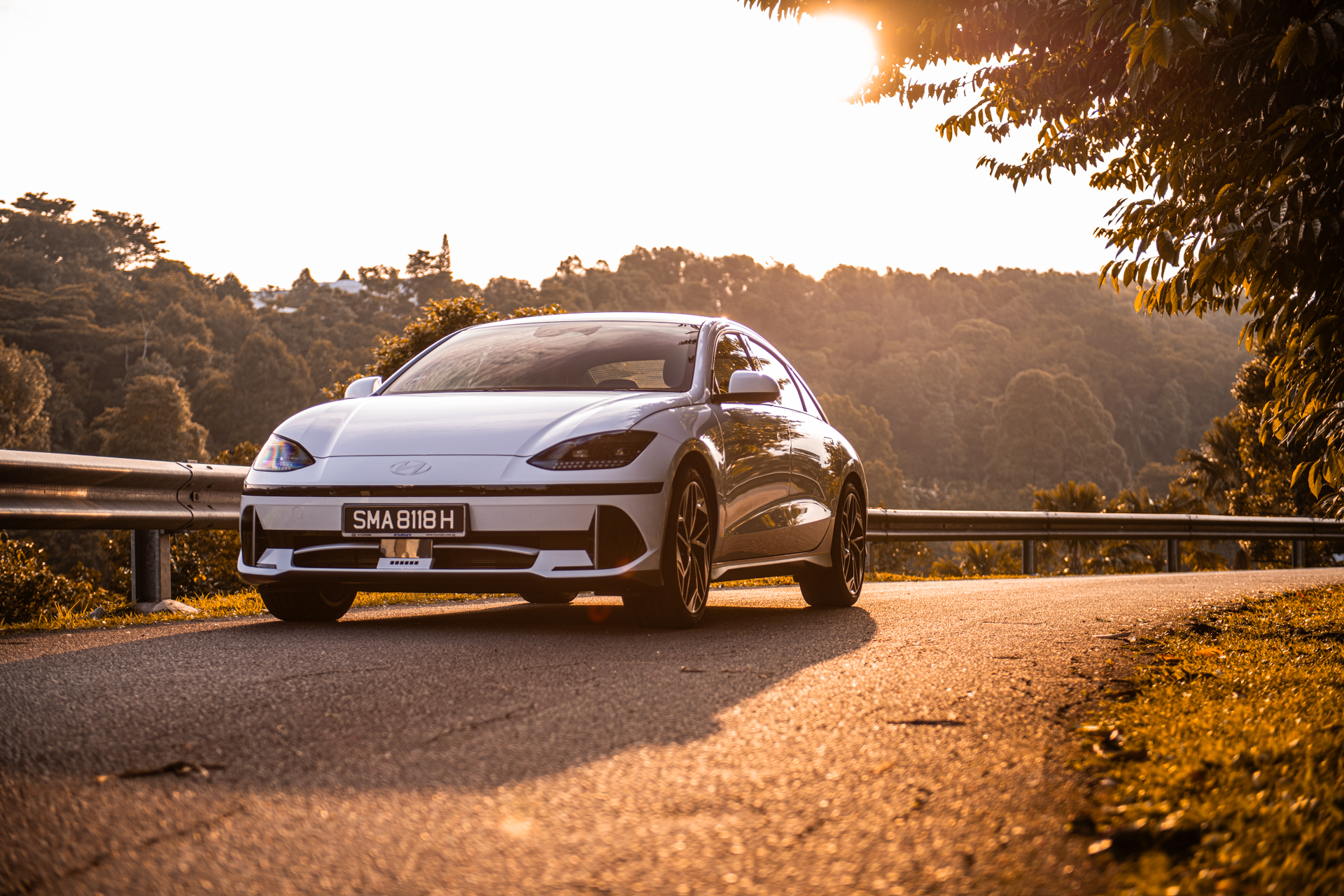
The Hyundai Ioniq 6 might have a few quirks up its sleeve, but it definitely has the moves to charm prospective EV buyers in Singapore. It’s like the Ioniq 5’s cooler, more refined sibling. The exterior facade might not be everyone’s cup of tea, but it’s the dance within that matters. It’s got the strengths of the 5, sprinkled with an extra dose of charisma.
It’s on track to be the 2023 EV star, and boy, it’s not shy about it. That’s why I feel it’s great.
Technical Specifications
Hyundai Ioniq 6 Electric
Engine: Two Permanent Magnet Synchronous Motors
Power: 239kW (321bhp)
Torque: 605Nm
Gearbox: Single-Speed (A)
0-100km/h: 5.1 seconds (claimed)
Top Speed: 185km/h
Battery Capacity: 77.4 kWh
Drive Range: 519 km (claimed)
Energy Consumption: 5.9 km/kWh (claimed)
Price: S$272,888 with COE (accurate at the time of this article)
Contact: Hyundai Singapore
Photo Credits: Sean Loo (@auto.driven)
Read more automotive news at AutoApp, or check out our latest videos on Ignition Labs TV!

